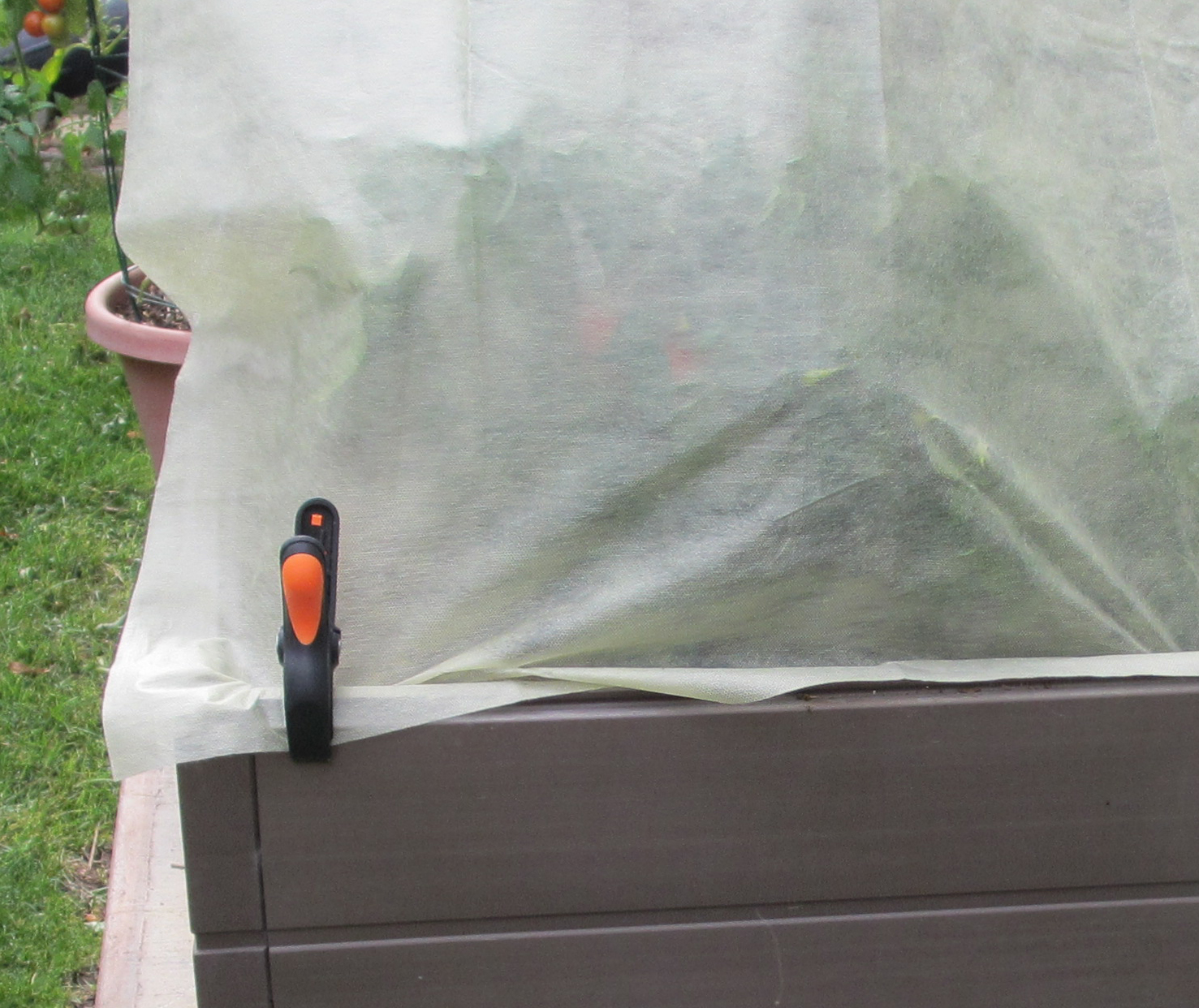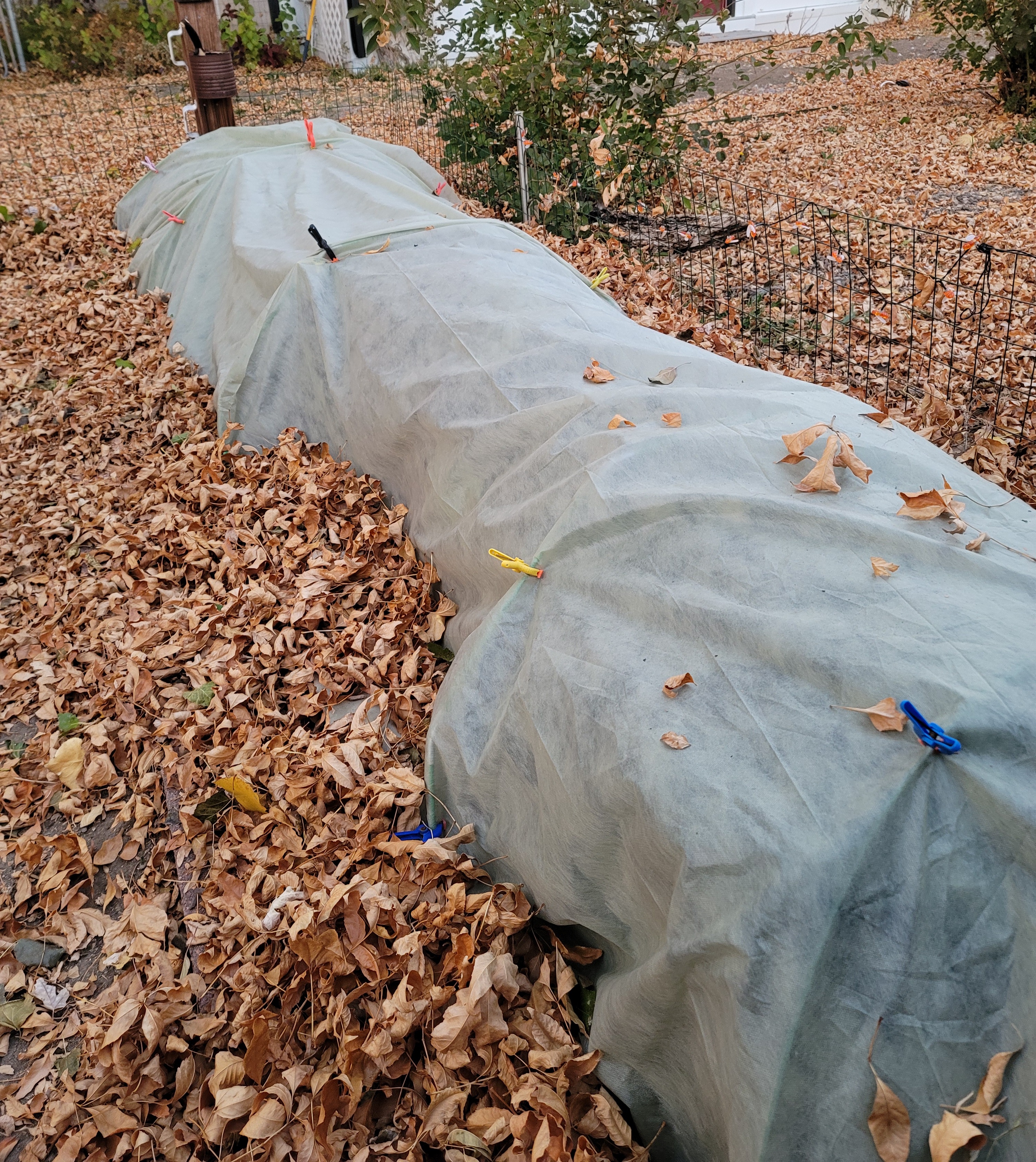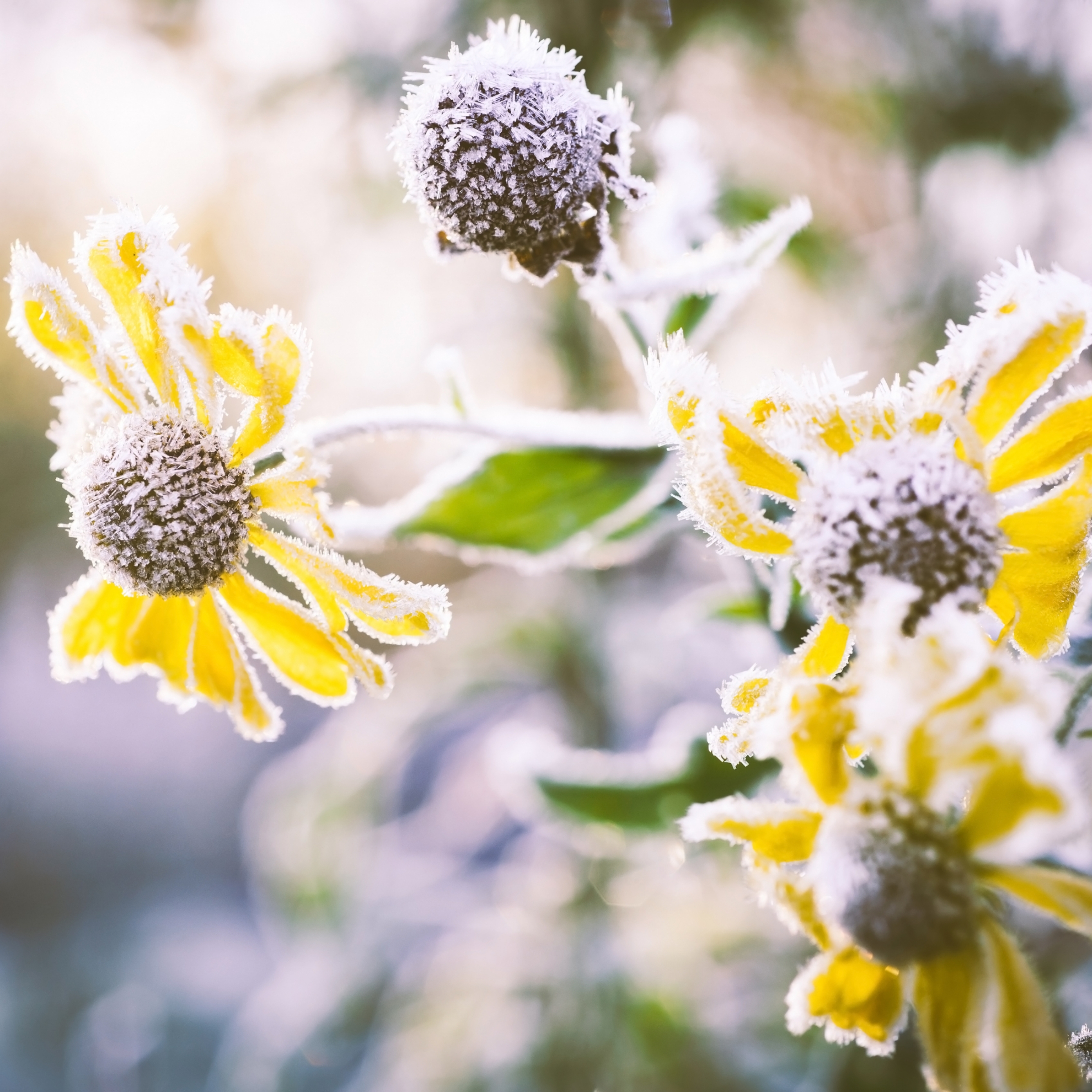What is Frost Cloth? What are Frost Blankets?
Frost cloth, also known as a frost blanket or row cover, is a lightweight fabric used in gardening and agriculture to protect plants from frost, cold temperatures, and light freezes. It is made from a variety of materials, including polyester, polypropylene, or spunbonded polyethylene.
Frost cloth is designed to allow sunlight, air, and moisture to pass through while trapping heat around the plant, creating a microclimate that protects the plant from the cold. The cloth is typically draped over the plant or garden bed and secured with stakes, rocks, or other weights.
Frost cloth is often used to extend the growing season by allowing gardeners to plant earlier in the spring and harvest later in the fall. It is also used to protect crops from insect pests, wind damage, and excessive sunlight. Overall, frost cloth is an effective and affordable way to protect plants from cold weather and other environmental stressors.

When Should I use Frost Cloth?
Frost cloth should be used when temperatures are expected to drop below freezing or when there is a risk of light frost or a light freeze. However, the specific temperature at which you should use frost cloth depends on the type of plants you are trying to protect.
As a general rule, it's a good idea to use frost cloth when temperatures are expected to drop below 32 degrees Fahrenheit (0 degrees Celsius) for more than a few hours. However, some plants can tolerate colder temperatures, while others are more sensitive to frost and may require protection at higher temperatures. Be sure to look up the hardiness for your plant ahead of time and have frost blankets on hand in case of chilly weather.
Frost cloth can be used to protect a wide range of plants, including vegetables, fruits, herbs, flowers, and shrubs. It's particularly useful for sensitive plants that are susceptible to frost damage, such as tomatoes, peppers, basil, and tender annuals.
It's also important to note that frost cloth is not a permanent solution and should be removed during the day when temperatures rise above freezing to allow sunlight and air to reach the plants. Additionally, frost cloth should be removed completely when the threat of frost has passed, as leaving it on for too long can lead to mold, disease, and other problems. Our frost cloth can be left on for several days in the case of an extended cold snap. For more helpful tips on using frost cloth, check out our blog here: Frost Cloth Tips.
How Long Should I Leave my Frost Blanket on Plants?
The Frost Protek® frost covers may be left on for days or even a few weeks at a time as long as the daytime temperature is not too hot. There is not a specific temperature which is “too hot” - just that the plant does not “cook” during a hot, sunny day. The cover may be left on during a cold spell without any harm to the plants. Our fabric is lightweight and breathable and will not harm plants. Remove the frost cover once annuals die back or perennials lose their foliage.
Can the Frost Covers be Left on Plants During the Day?
Absolutely! The fabric allows air and UV light to reach the plants. One of the great benefits of this cover is that it does not need to be taken off each morning and then replaced each evening. The cover may be left on for days at a time if desired and the daytime temperature is not too hot. There is not a specific temperature which is “too hot” - just that the plant does not “cook” during a hot, sunny day. The cover may be left on during a cold spell without any harm to the plants. Remove the cover once annuals die back or perennials lose their foliage.
Can the Fabric Covers Protect Plants During the Winter?
Frost Protek® fabric covers are designed for use during the growing season, or as long as there is live foliage on the plant. They can be used for periodic frost protection in climates with a year-round growing season, such as Florida and California. In most climates, perennials do not need protection from the elements while they are dormant. Be sure to remove covers once foliage has died back to ensure bare branches don't puncture your covers. You can use them again in the new growing season once foliage starts to form to insulate sensitive plants and young leaves from a frost or cool nights.
How do the Fabric Covers Protect Plants from Wind?
The cover shelters foliage and blossoms during strong wind and helps prevent breakage. This is particularly helpful for hanging baskets and flowering vines, or when transporting delicate plants. The covers are not designed for use against wind in colder climates over the winter. In most climates, perennials do not need protection from the elements while they are dormant.
However, if the frost cloth is wrapped around the plants tightly and securely, it can provide some protection against the wind by creating a barrier that slows down the movement of air around the plants. This can help prevent the wind from drying out the plants and damaging their foliage. Additionally, if the frost cloth is anchored securely to the ground, it can help protect plants from strong winds by creating a physical barrier that shields them from the full force of the wind.
Overall, while frost cloth is not specifically designed to protect plants from wind, it can provide some degree of protection if it is used properly and secured tightly around the plants. However, for stronger wind protection, other types of covers or structures such as windbreaks may be more effective.

What is the Fabric Made With?
The weather protection fabric is 100% polypropylene, which is the same fabric used by commercial growers for frost and pest protection. The fabric is lightweight and doesn't crush plants. It is breathable and enables the plant to receive the air it needs. Light penetrates through the fabric to the plants. The fabric weight is 0.9 oz. per square yard (metric 30 grams per square meter). This weight protects from 4° to 6° below freezing, or about 28° to 26° Fahrenheit (-3.0° Celsius).
Can Frost Protek Covers be Washed?
Yes! Our covers can be washed in cold water and they air dry quickly. Don't dry them with heat or iron them, though.
How Long will the Covers Last?
With normal use and care, the cover should last for several seasons. It is lightweight and folds small to store easily. Store out of direct sunlight or UV light to prolong the life of the fabric. All gardeners should have frost cloth on hand in the event of unexpected weather.
How can I Secure the Garden Bed or Row Cover in Place?
When wound around a plant or display, the cover may be held in place with clothes pins, safety pins, or other similar items. The cover may be fastened to itself or to the container. When used for in-ground plants, it may be held down with any type of heavy object such as a rock, brick, dirt, or landscape fabric pin. For raised beds, a clamp works well.

Which Cover Should I Choose?
All of our frost blankets are made of polypropylene, but the size, shape, and drawstring differ by item. Check out our website for our options! We have products in all shapes and sizes. If you can't find what you're looking for, shoot us an email at sales@frostprotek.com.
